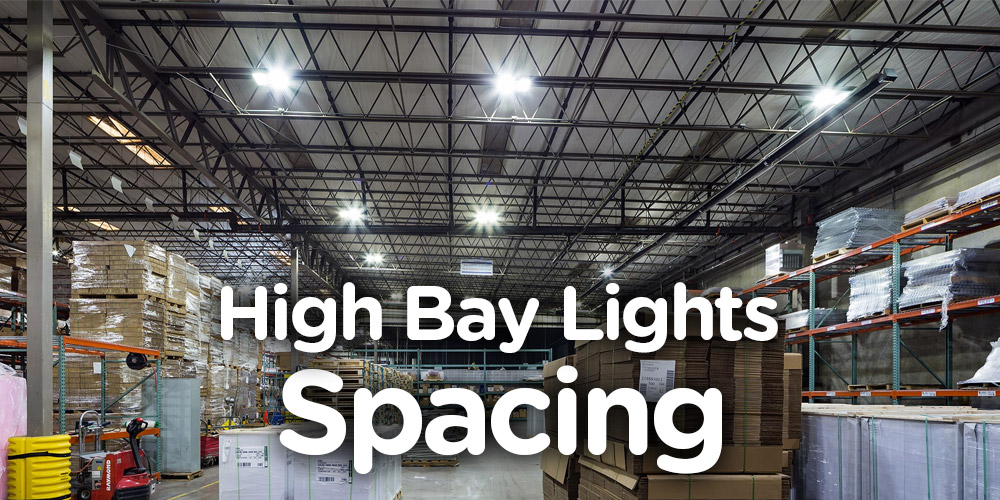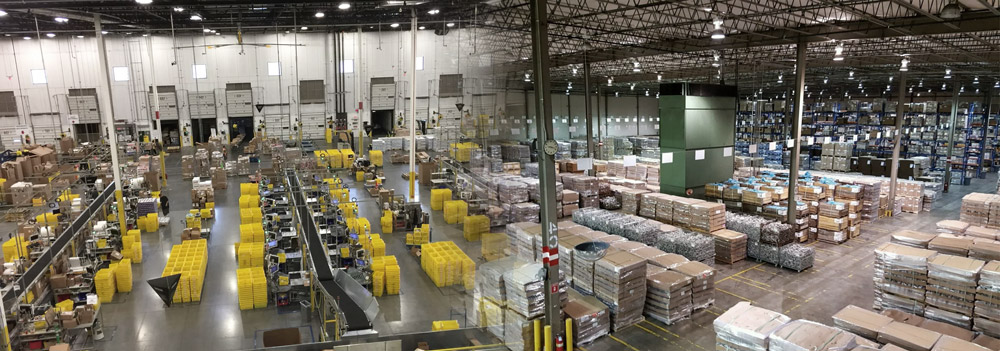
Are you looking forward to investing in high bay lights? If so, it’s important to opt for a product that will satisfy your needs. The fact that high bay lighting has immense benefits, their energy efficiency, and lighting consistency depends on how far or how you arrange them on the ceiling.
In this piece, we are going to guide you on the spacing of high bay light and before we get started, let’s have a look at what it entails.
What are the high bay lights?
Just as the name suggests, high bay lights are specifically designed for tall ceilings and larger areas. They’re powerful and offer a strong illumination even over long distance. For this reason, they are best suited for use in commercial and industrial purposes such as warehouses and retail stores. They’re basically used for the ceiling that ranges from 20 to 50 feet. The reason for this is because high ceiling setting offers more space to fill and their powerful light source can brighten up a huge area. There are many options of high bay light applied in different sectors. Let’s have a look at their application.
How far should the high bay lighting be apart in factory or warehouse?
It is essential to consider the correct distance or space to place the light. You need to consider about three cases when opting for high bay lights for your lighting needs. Below are the cases;
1. At 15 to 19 feet height
If you want a bright light in your factory, place the light about 10 – 12 feet spacing. In case you want a normal light, the ideal lighting space should be maintained at 14 feet high. If the high bay lights are wider apart, they can give a more uniform ground illumination, which is better for worker safety and productivity.
2. At 20 to 29 feet high
You can opt for a 18 to 20 feet spacing if you need to generate bright light. In case you want a normal light, then a spacing of up to 16 feet is ideal. Since the mounting height is higher, we will need higher power high bay lights. Besides, we need to use a wider beam angle if we select 20 feet spacing for high bay lights. It is because the light beam can be evenly spread across the rack.
3. 30 feet or higher
If you own a spacious warehouse with high ceiling height, consider a 20 feet spacing between the lights to get bright light. However, in the case of normal light, 25 feet spacing is appropriate. In this case, we will need to mount 400 watt to 1000 watt LED high bay to provide sufficient brightness.

How should we arrange the lighting fixtures on the ceiling?
The idea of arranging the factory light is to ensure good visibility around the working environment. It makes the workers feel safe and active. It also minimizes accident cases and the number of faults.
Again, good arrangement of factory lighting has enough and uniform light in the working area. There is also a high luminous flux, reduced glare, and ideal color temperature. Basically, when arranging the lighting fixtures on the ceiling, you need to do the following;
1. Classify the lighting method
Be sure of the class of lighting you want for your factory needs. Choose local lighting, general lighting, or hybrid lighting.
2. Lamp selection
Understand the type of lamp you want and choose the factory lighting fixtures that are safe and easy to maintain, Waterproof, dustproof, or LED explosion-proof, etc.
Note that the arrangement of the high bay lights should be maintained between 1.5 – 1.8 matrix.
Applications of high bay light
High bay lighting is currently transforming the energy sectors in large industrial facilities. They’re applied in warehousing, factories, cold storage, gym, commercial and retail sectors. Let’s have a look at how they’re applicable in some of these sectors.
1. Commercial and retail
They’re used in big box stores, grocery stores, casinos, retail showrooms, shopping malls, and other retail/commercial settings to enhance the quality of light and act as a substantial energy saving option.
2. Warehousing
There are always lighting issues as far as warehouses are concerned. Warehouses must meet the light ASHRAE standards without compromising on the quality of light. High bay lights are specifically designed to meet these lighting safety standards while delivering maximum light levels in the working environment. They basically use less energy than other traditional warehouse lighting solutions.
3. Cold storage
Cold storage facilities have diversification features that influence the choice of lighting. High quality light is required when workers are present and don’t need additional heat in the facility. High bay lights are exceptionally perfect for cold storage lighting solution. They use integrated intelligence to enhance energy efficiency; they have a LED high-intensity feature and works well in a chilled environment.
4. Manufacturing
Manufacturing facilities require high-quality and energy-efficient lighting. However, manufacturing companies have a specific set of diversifications and considerations as far as the type of lighting is concerned. High bay lights are effective in a manufacturing environment and are basically designed for rugged environments. High bay lights have a wide optic package that evenly distributes the light in open areas. They can maximize the light intensity needed while reducing energy usage.
Final word
Basically, lighting is fundamental and requires specific measurements. It’s not all about installing lights and getting started, the correct spacing is appropriate, and with this guide, you’ll install your high bay lights at ease. Thank you!
